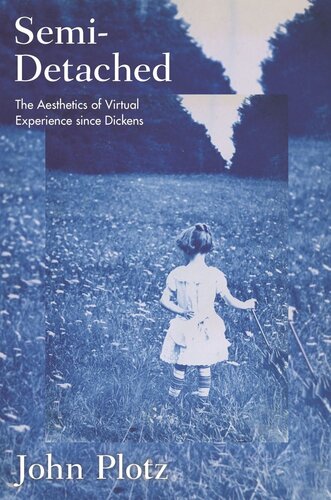

Most ebook files are in PDF format, so you can easily read them using various software such as Foxit Reader or directly on the Google Chrome browser.
Some ebook files are released by publishers in other formats such as .awz, .mobi, .epub, .fb2, etc. You may need to install specific software to read these formats on mobile/PC, such as Calibre.
Please read the tutorial at this link: https://ebookbell.com/faq
We offer FREE conversion to the popular formats you request; however, this may take some time. Therefore, right after payment, please email us, and we will try to provide the service as quickly as possible.
For some exceptional file formats or broken links (if any), please refrain from opening any disputes. Instead, email us first, and we will try to assist within a maximum of 6 hours.
EbookBell Team

4.7
96 reviewsWhen you are half lost in a work of art, what happens to the half left behind? Semi-Detached delves into this state of being: what it means to be within and without our social and physical milieu, at once interacting and drifting away, and how it affects our ideas about aesthetics. The allure of many modern aesthetic experiences, this book argues, is that artworks trigger and provide ways to make sense of this oscillating, in-between place. John Plotz focuses on Victorian and early modernist writers and artists who understood their work as tapping into, amplifying, or giving shape to a suspended duality of experience.
The book begins with the decline of the romantic tale, the rise of realism, and John Stuart Mill’s ideas about social interaction and subjective perception. Plotz examines Pre-Raphaelite paintings that take semi-detached states of attention as their subject and novels that treat provincial subjects as simultaneously peripheral and central. He discusses how realist writers such as Charles Dickens, George Eliot, and Henry James show how consciousness can be in more than one place at a time; how the work of William Morris demonstrates the shifting forms of semi-detachment in print and visual media; and how Willa Cather created a form of modernism that connected aesthetic dreaming and reality. Plotz concludes with a look at early cinema and the works of Buster Keaton, who found remarkable ways to portray semi-detachment on screen.
In a time of cyberdependency and virtual worlds, when it seems that attention to everyday reality is stretching thin, Semi-Detached takes a historical and critical look at the halfway-thereness that audiences have long comprehended and embraced in their aesthetic encounters.